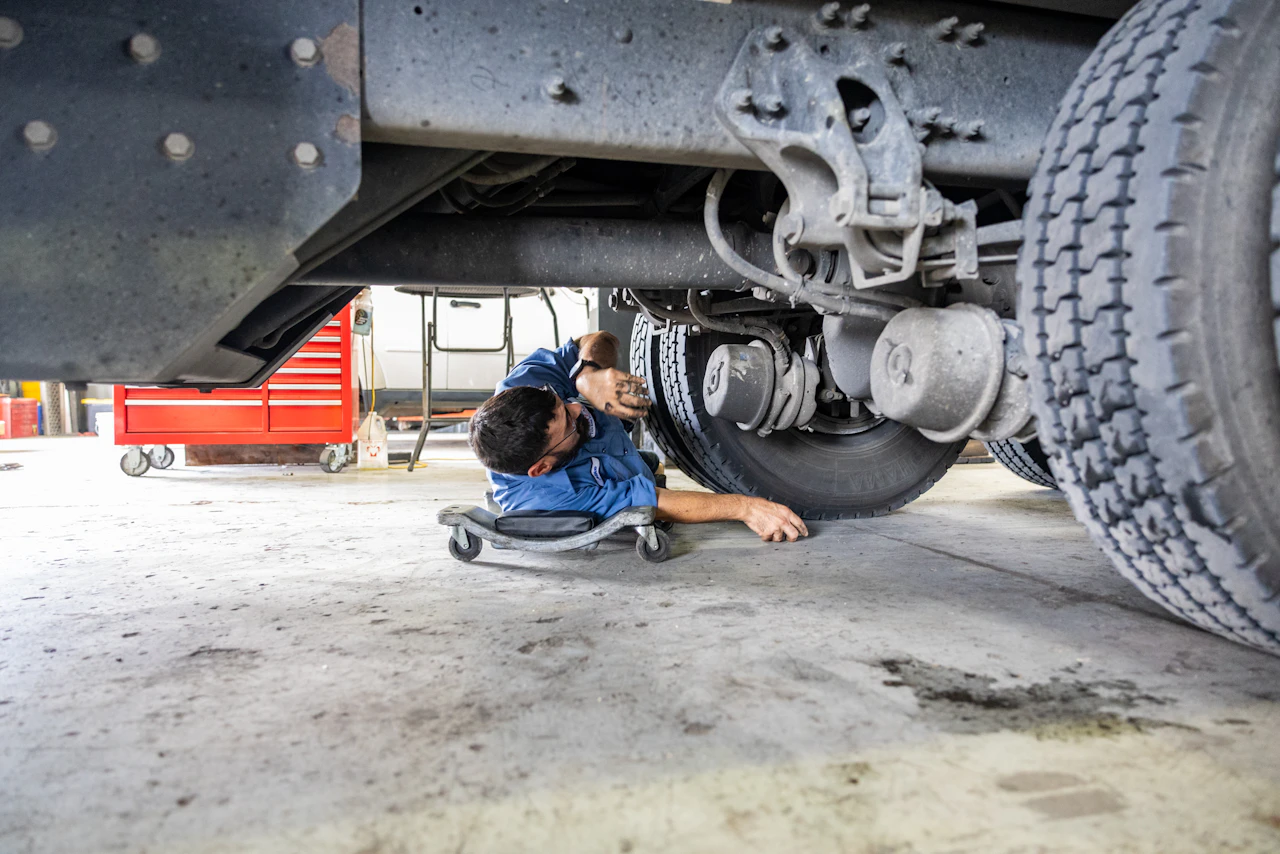When you’re driving a Class 8 truck hauling 80,000 pounds through the Fraser Canyon or navigating logging roads in Cape Scott, BC, there’s no room for brake failure. Although every system in your vehicle plays an important role, your brakes are the last line of defense. And when they fail, the results can be catastrophic.
As an operator, it’s important to know how to spot early warning signs and know what to check during your brake inspections to keep your truck (and everyone around it) safe on the road.
Excessive Heat and Wear
The biggest culprit behind brake failure in commercial trucks is excessive heat. And this happens with overuse, poor maintenance, or system imbalances.
Unlike cars that are predominantly equipped with disc brakes, heavy-duty trucks rely on air brake systems. While tough and reliable, air brakes are not invincible. When drum brakes overheat, the lining can glaze or crack, reducing friction. Worse, moisture in the air system can freeze in winter, causing air valves and lines to lock up.
Top causes of brake failure include:
- Overheated brake drums
- Worn-out or out-of-adjustment brake shoes
- Moisture buildup in air lines
- Malfunctioning slack adjusters
- Leaking air reservoirs or valves
Roads here in British Columbia can be treacherous. Mountain passes force drivers to ride their brakes longer, increasing heat and the risk of fade. Cold temperatures bring another challenge: frozen air lines if the air dryer isn’t working properly.
What to Watch For: Signs of Brake Fade
Before your brakes fail, they try to tell you something is wrong. Before your brakes fail, your truck usually gives you warning signs. They may be subtle at first, but serious if ignored. Catching these signs early can be the difference between a smooth stop and a runaway truck.
If you’re behind the wheel, it’s important to look out for:
- Pulling to one side while braking
- Increased stopping distance
- Spongy or delayed brake response
- Hissing sounds from leaking air
- Brake warning light on your dash
- Burning smell after a descent
- Uneven tire wear from brake imbalance
If you notice any of these signs—especially on BC’s steep grades—don’t brush them off. Get it checked before your next trip.
Brake Check Stops: Not Just for Show
If you’ve ever hauled a load through BC's mountain highways, you’ve seen the mandatory brake check pull-outs. But let’s be honest, how often are you really using that stop to do a proper inspection?
You won’t spot any issues with your brakes if you’re not looking for them. So, next time you hit one of these brake check spots, take a few minutes and run through this quick list:
Telltale signs of brake issues:
- Listen for air leaks: When you do your pre-trip walkaround, make sure you apply pressure to the brakes and release them. Any hissing? You’ve got a problem.
- Measure pushrod stroke: Use a brake gauge. If the stroke exceeds the limit, your slack adjuster may be out of spec.
- Check brake drum temps: This is particularly important after a descent. Use an infrared thermometer. If one drum is much hotter than the others, that's a red flag.
- Inspect brake shoes: Look for cracks, oil contamination, or excessive wear.
- Look at the air tanks and valves: Moisture? Rust? Time to drain and clean.
- Feel the pedal: If it feels soft or slow to respond, it could be air in the system, or worse.
They may seem like a hassle, but brake check stations aren’t just a formality. They’re a measure of safety, especially when hauling heavy loads through steep or remote routes.
Prevent Brake Failure With Routine
Preventive maintenance (PM) is your first and best defense. In a province like British Columbia, where long grades and winter conditions constantly test your system, PM isn't optional. It’s necessary. And scheduling your PM before heading out on a long haul is going to save you from having impromptu middle-of-nowhere breakdowns.
Here’s how to stay ahead of brake issues:
- Drain your air tanks daily to remove moisture
- Replace air dryer cartridges at least once a year—or before winter
- Adjust slack adjusters or ensure auto-adjusters are working
- Replace brake shoes well before they’re worn to the minimum thickness
- Inspect drums and rotors for heat checking or cracking
- Schedule regular brake inspections every 15,000–25,000 km, depending on haul type
And don’t forget about driver habits. Use engine brakes or retarders whenever possible to avoid riding the service brakes, especially on downhill stretches like the Coquihalla or Sutton passes.
Final Thoughts
Brake failure is one of the most dangerous mechanical failures a truck can experience. Still, it’s one of the most preventable. In the rugged terrain and unpredictable weather of British Columbia, staying on top of inspections, maintenance, and proper driving technique is crucial.
So, the next time you roll up to a brake check area, use it. You never know what your brakes are trying to tell you.






